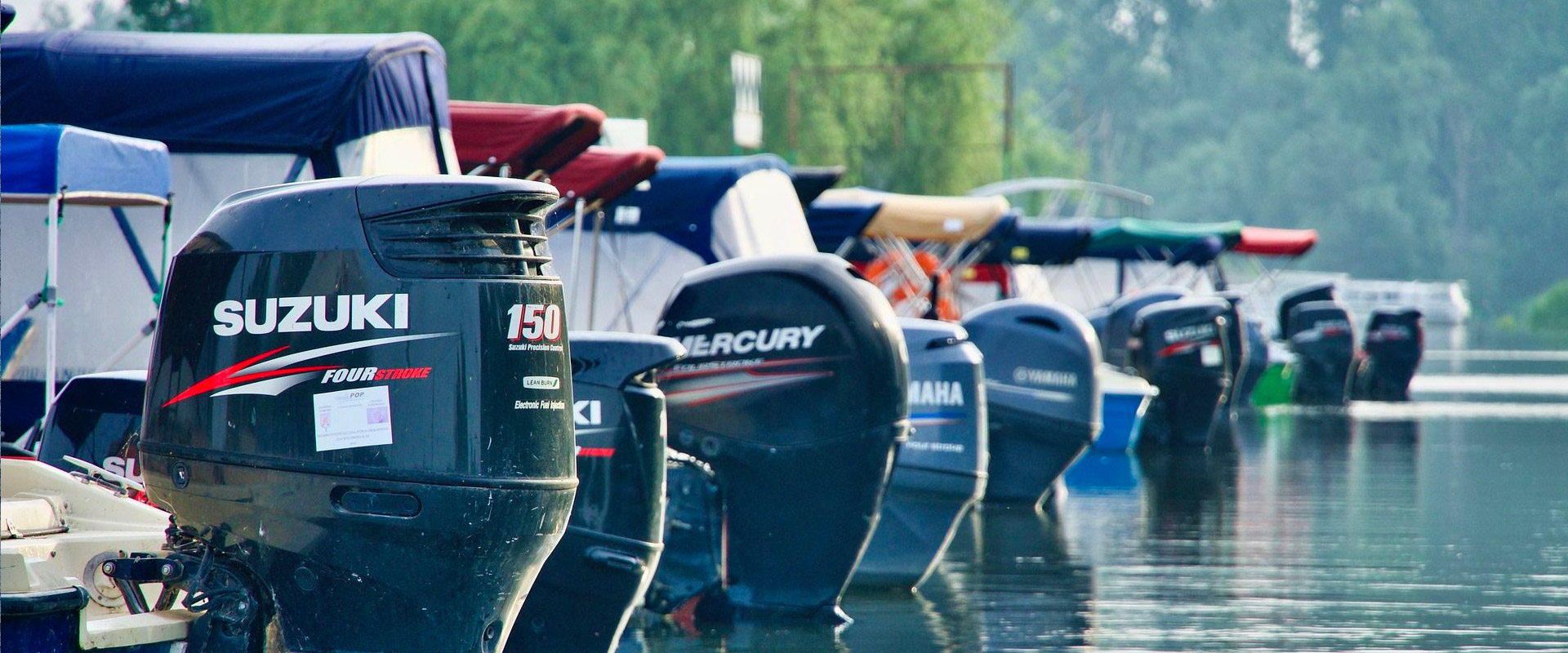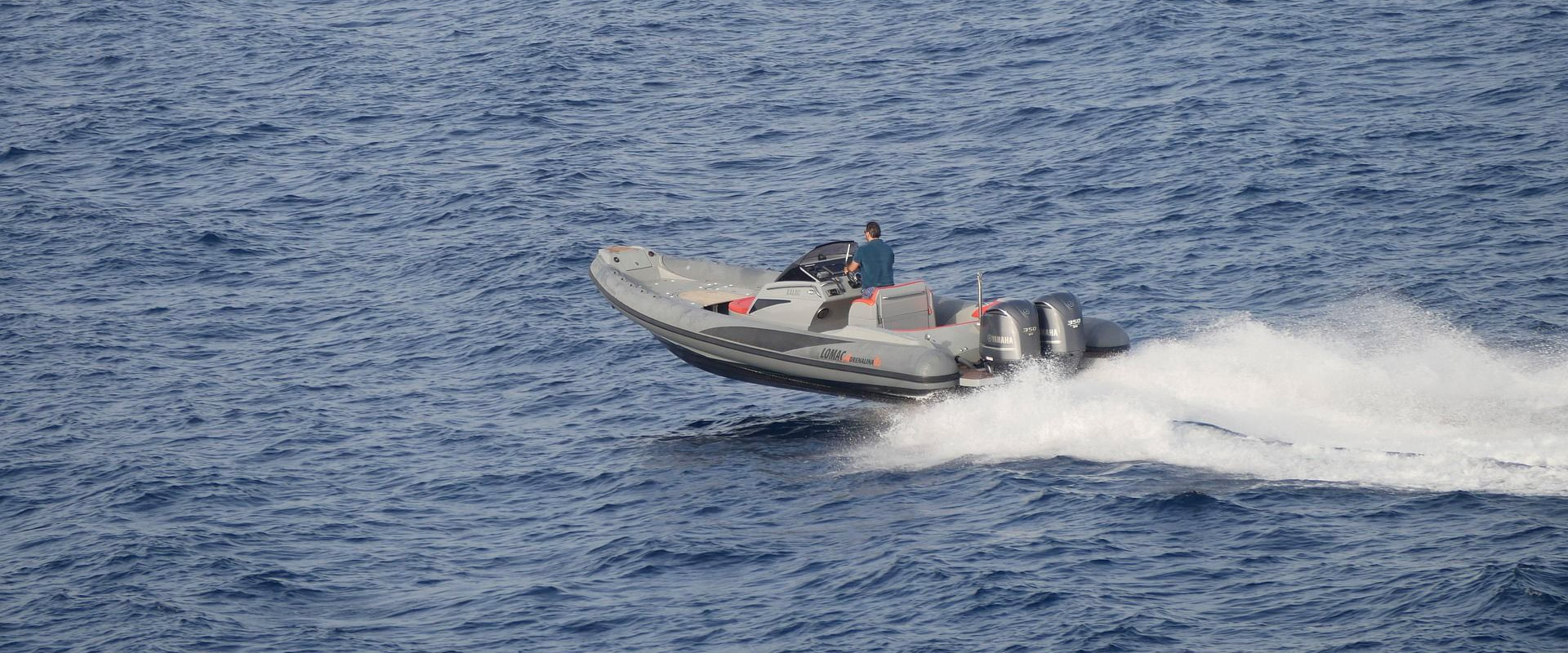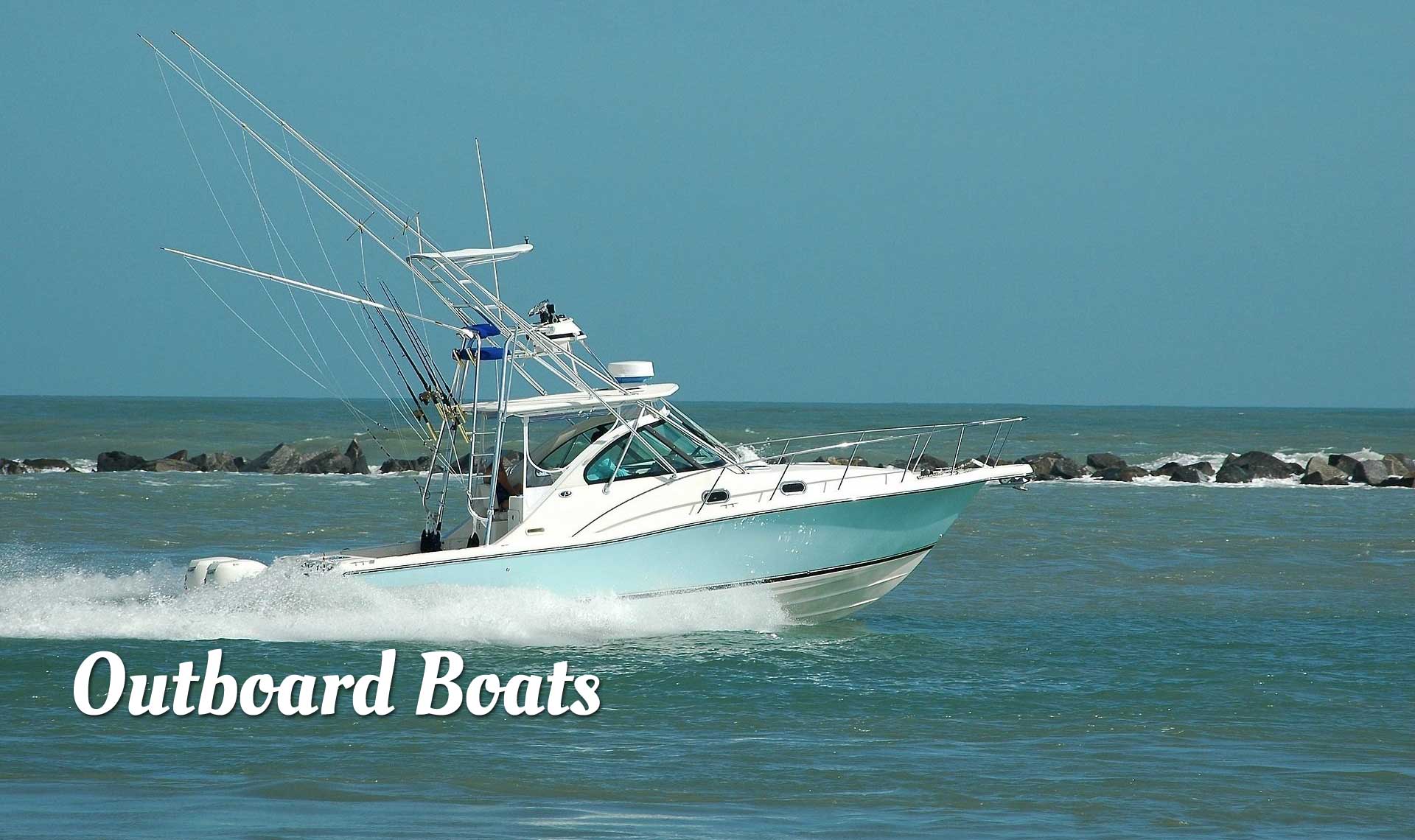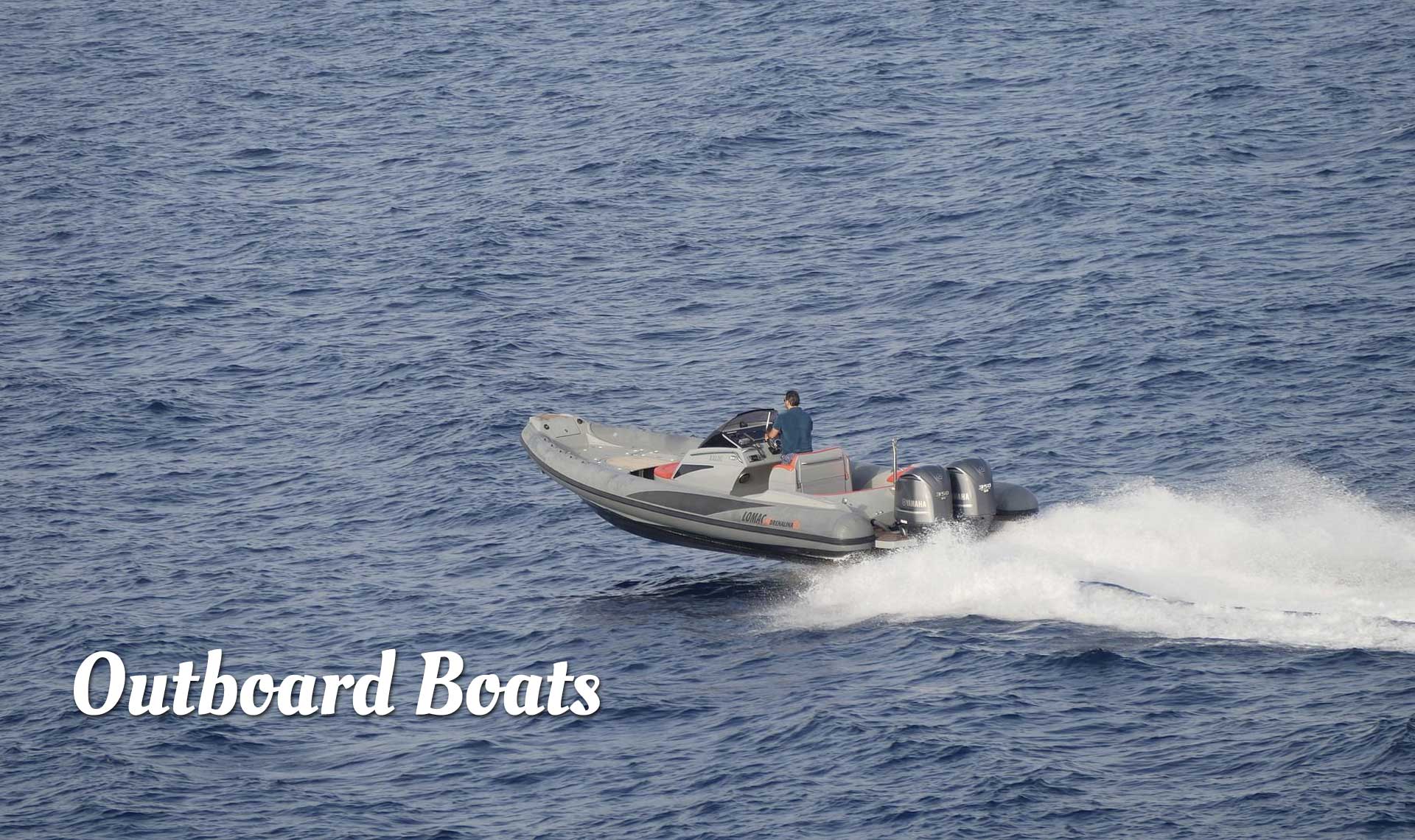Outboard Motor Boats
Outboard motor boats, commonly referred to as outboard boats, are a popular type of watercraft equipped with outboard motors that provide propulsion and steering. These boats are versatile and used for various purposes, from recreational boating to fishing, watersports, and transportation. Below is an overview of outboard motor boats, followed by Hints on Driving, Installing the Outboard Motor, Maintenance and the importance of the Kill Cord.
Key Features of Outboard Motor Boats
Outboard Motor
The defining feature of these boats is the outboard motor, which is mounted on the boat's transom (the back end). The outboard motor consists of an engine, a gearbox, and a propeller. It provides the primary means of propulsion and steering for the boat.
Versatility
Outboard boats come in various sizes and designs, making them suitable for a wide range of activities. Smaller outboard boats are often used for fishing and cruising, while larger ones may be used for water-sports, offshore adventures, or as tenders for larger vessels.
Easy Maintenance
Outboard motors are relatively easy to maintain and repair. They can be removed and serviced separately from the boat, which simplifies maintenance and reduces downtime.
Manoeuvrability
The outboard motor's positioning on the transom allows for excellent manoeuvrability, making it easy to navigate in tight spaces, dock, and execute sharp turns.
Fuel Efficiency
Many outboard motors are designed for fuel efficiency, making them an economical choice for boaters.
Types of Outboard Motor Boats
Center Console Boats
These boats have a console located in the center of the deck. They are popular for fishing and often have rod holders, live wells, and ample deck space for angling.
Bow-rider Boats
Bow riders have an open bow area with seating and are known for their family-friendly design. They are used for water-sports, sunbathing, and cruising.
Cuddy Cabin Boats
Cuddy cabins provide a small cabin space, typically with seating or sleeping accommodations. These boats are versatile and can be used for fishing or overnight trips.
Pontoon Boats
Some pontoon boats are equipped with outboard motors. They are ideal for leisurely cruises and are known for their stability and spacious deck areas.
Inflatable Boats
Inflatables with outboard motors are lightweight and portable. They are often used as tenders or for boating in shallow or remote areas.
Rigid Inflatable Boats (RIBs)
RIBs have a rigid hull with inflatable tubes for buoyancy. They are used for various purposes, including rescue operations, military applications, and recreational boating.
Sport-fishing Boats
These boats are designed with fishing amenities and are often equipped with multiple outboard motors for speed and power.
Aluminium Fishing Boats
Lightweight and durable, aluminium fishing boats are often powered by outboard motors. They are common choices for freshwater fishing.
Outboard motor boats offer the advantage of portability, easy maintenance, and a wide range of choices to suit different boating preferences. Their design allows for efficient use of deck space, making them popular for many recreational and commercial boating activities
Outboard Boats - Handy Information
The Evinrude Outboard
In the early 1900’s Cameroon Waterman, an American, designed an outboard motor based on the motorcycle engine, a few years later Ole Evinrude a Norwegian/American designed an outboard, the ‘Evinrude Outboard’ went on to be one of the most popular outboards in America and is marketed today as a global brand.
Modern Outboard Motors
Modern outboard motors are either 2 or 4 stroke, traditionally using a carburettor to supply fuel mix to the cylinder. To comply with new emission regulations, these models are being phased out for the cleaner and more efficient fuel injection systems, or the increasing use of an Electric Outboard Motor.

Installing the outboard motor
It is essential to check the outboard is correctly installed on the transom. An outboard motor too high out of the water means the propellor will slip and cavitate. An outboard motor too low could result in excess drag and the engine could be swamped by a following sea. Outboard motor tilt is also important, the wrong angle of tilt pushes the bow or stern down, this slows the boat and decreases fuel efficiency. As speed increases the correct angle can be checked by looking at the cavitation plate (located above the prop) on the outboard, it should align with the water.
Outboard Boats - Hints on Driving
As you become more experienced at driving with an outboard it becomes second nature to set the correct tilt, speed and trim. These settings ensure guests and crew have an enjoyable ride. You should also learn to set economical cruising speeds that are adjusted to the sea state, this provides maximum comfort and fuel economy.
Propellers
Propellers can be designed to suit different jobs. For fishing and trolling, propellors require a lower pitch. For faster boats a higher pitch and for maximum efficiency a Duo Prop is essential.
Spark Plugs
Spark Plugs are one of the most important parts of an outboard. Carrying a spare set is essential. There is a degree of minimum maintenance necessary for the efficient running of the engine. Spark plugs should be removed and cleaned, the sparking gap checked and adjusted as required and a new gasket fitted on replacing the plug. Always remember after replacing to clean around the plug with a clean, dry cloth.
Galvanic & Stray Current Corrosion
Galvanic and stray current corrosion is one of the main threats to the life of an outboard motor. Galvanic corrosion is the electrochemical reaction between dissimilar metals. Stray current corrosion for example can be when a boat is connected to the shore power, it will flow through the boat, the outboard and then to ground through the water. There are many forms of stray currents that can affect a boat.

The salt-water environment
When the outboard is used in a saltwater environment, it is important to clean the engine inside and out with fresh water as soon as possible after finishing for the day. Also, check anodes are intact and in place. A good habit is to periodically inspect the outboard for white powdering around connections and blistering paintwork, indicating signs of galvanic corrosion.
Outboard Boats - Using the Kill Cord
When the boat is underway, and for the safety of the crew and passengers, the helmsman must always be attached to the boat with the kill cord. If the helmsman falls out of the boat and the kill cord is attached, the engine will switch off, thus preventing a catastrophic accident. If the helmsman falls overboard without being attached, the engine will continue to run without steerage. In many cases due to the handing of the prop the outboard will swing to one side taking the boat on a circular route back to where the helmsman has fallen into the water. A spare kill cord is an essential spare part to be kept aboard.
Outboard Boats Maintenance
Imardex Marine has designed a comprehensive maintenance programme to be followed by owners of outboard boats. Requiring only basic skills, this maintenance programme covers all the mechanical work to keep the engine in a seaworthy condition. It does not include tasks where rebuilding is required. The programme is easy to use and access. The task schedules can be set to those periods alongside allocated for maintenance. Access to this database is available on a monthly subscription.
Boat Insurance
Please click here to read our Boat Insurance information.>
Electric Outboard Motors
The Electric Outboard Motor and its write up will be available as a new post early 2024
The imardex-marine team



